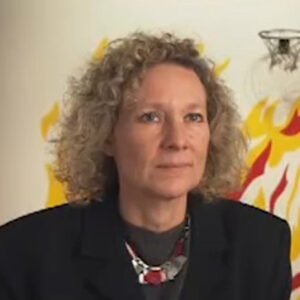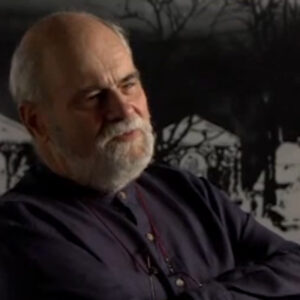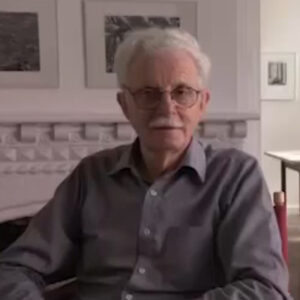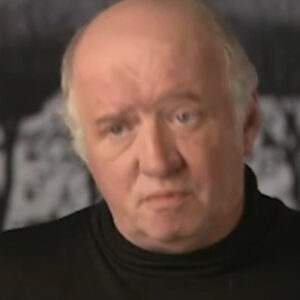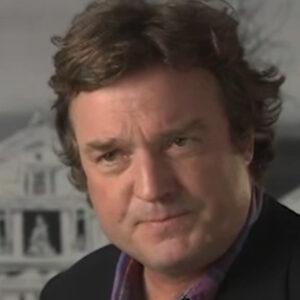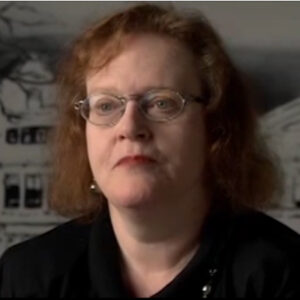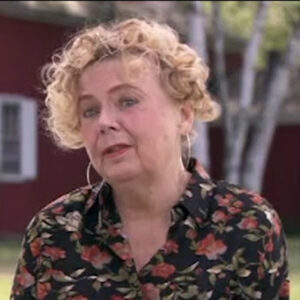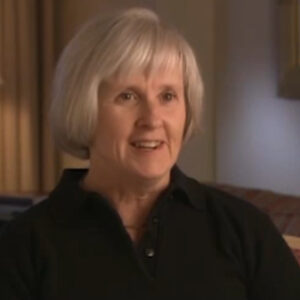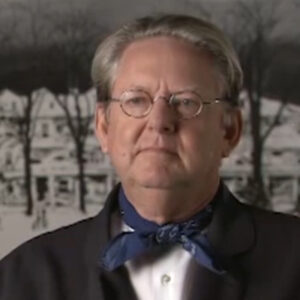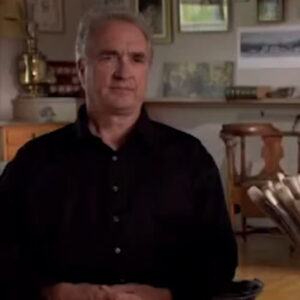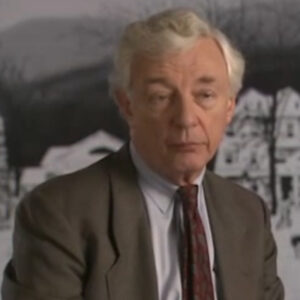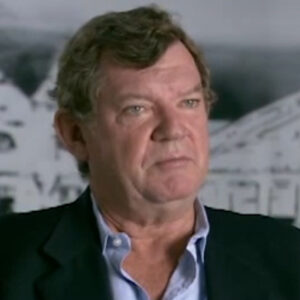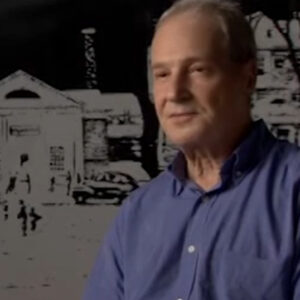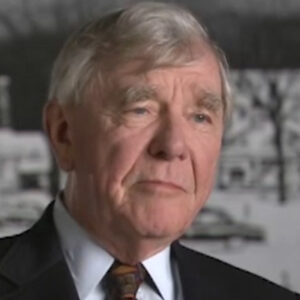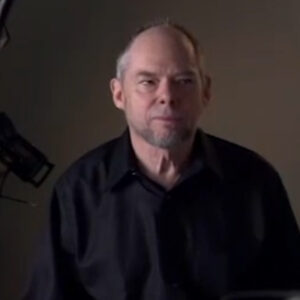Speaker Tell me what your impression of Norman Rockwell was before you got the commission to design the museum.
Speaker Norman Rockwell is an American God, practically in a funny way, but he’s certainly and he he or and his work, both in a funny way, coalesce as I as an icon. I think I’m old enough to remember when Rockwell was alive and to remember the Saturday Evening Post covers and then when he changed his style and began to deal with more serious social issues. I remember that as well. So I remember the man and the and the and the art. And I have a considerable interest in. The art scene. Let’s call it. And, of course, Rockwell is kind of questionable in the art scene in a funny way. You’re not taken seriously. Except if you talk to really serious artists, really wonderful artists, they often have a certain grudging respect for him or an interest. So those are the impressions I had when I was asked to do this project were considerable. But once I got to really get it sort of into the archive and see what things were. Talk to Laurie Norton, who had spent so much of her then very short life, but studying Rockwell. I really realized the depth of him. But as an architect, of course, the challenge was to make an environment for an icon, a pilgrimage place. On the other hand, to make it an art museum that was a serious art museum that treated Brockwell not just as a God, but as a serious artist working in a certain genre of which he was the master and connecting to people in ways that I think every artist dreams of connecting. But because of artistic limitations or style doesn’t often connect.
Speaker So we.
Speaker Were your choices to go. The heroic route or of the non heroic route? Well, take me through some of the choices you have to make.
Speaker Well, I’ll try to answer your question in a slightly different way. The problem posed to design this museum was, of course, to create a pilgrimage place for a vast number of people. But there was another level of the problem. Rockwell had helped save a house on Stockbridge, his main street, two miles and a little bit from where the museum is now. And that little house, the corner house, was by the time the museum realized it had to build, swamped by Rockwells. He was now dead, of course, swamped by Rockwells, visitors. The visitors to the collection. I should point out that when Rockwell died, he left his considerable archives and the paintings that were the basis for the illustrations to the corner house, which he had helped save. So the museum was faced with the dilemma of where to build a new museum to accommodate these increasing crowds. And clearly, they couldn’t do that in Stockbridge, which is a beautiful town. And so they looked for a site outside town. And the Linwood House site is a wonderful site. But if you arrived at Wynwood by bus or even by car, you might never go to Stockbridge. And therefore, you were wrenching Rockwell’s art from not just an accidental situation on Main Street, but where he had fought to save the house, where he had lived and where for a good number of years, people had seen the art in that place. Incidentally, as well, he had painted Main Street and he had his studio on Main Street, and the studio itself was one of the most important buildings on Main. So you have this fantastic in the current jargons site, specific art in a way. And he painted people from the town and so forth. And then you want to bring them to another place, the art to another place, even though close by. How do you bring the experience of the main street without trivializing Main Street or creating something here that sort of a fake main street, which we couldn’t or wouldn’t? So that was the challenge to make an environment that was evocative of New England, of this main street in Stockbridge in particular, to showcase the art so that a jaded New York Soho type could come up and recognize that this man was an artist, not just an icon. Then at the same time, to make it a satisfactory environment for people who are touring New England, who may come from anywhere around the world, as indeed they do, many of whom have never been in, quote, art museum in their lives. They come here because of. Norman Rockwell, not because of an interest in art. Put that all together is what the challenge was. And we struggled. There was a competition for the design of the building. Three firms are design solution. Was the represents the result of that? I struggle with icons and environments and the town scape, if you will.
Speaker Now, the museum is a classical tradition. Right. Can you talk about the relationship between Rockwell and America’s classical roots and how you reflected that in design?
Speaker Norman Rockwell is an artist and a person who grew up in a period in which the stability’s of historic American life of the 19th and early 20th century were dramatically shattered, sometimes for the good.
Speaker I mean, the automobile did wonderful things, electricity in every home, plumbing and every back and every out of the backyard into the house and so on. At the other hand, his generation, maybe more than any others, sensed that a lot was being sacrificed in the new technological period. Certain values of people to people in communities and the physical fabric of the communities themselves. His world of images is put largely set in a kind of hinted at architecture, which comes out of the American vernacular of small towns in New England and the eastern part of the United States. In general, that vernacular is classically based. Jefferson set it up that way if nobody else did. He willed a classicism on America as a way to connect our culture. They represented by Monticello, the University of Virginia, which he designed, both of which he designed a connect our culture with the D distant past of Greece and Rome, Rome for its great. Government, Greece, for its values of democracy, after all, that’s the Greek word. And so on, that has continued to affect our buildings all the way through history. But by the time Rockwell was painting, that was caught falling into question. He was freeze framing, if you will, for another generation, a certain image of America. Social, architectural and what have you. It would be wrong, in my opinion, to house his art in a museum that bespoke the antique classical tendencies of the 20th century, of which there are very many and which are very creative. Maybe that doesn’t mean the Rockwell’s art couldn’t survive in a high art museum in Atlanta or a Bilbao, for that matter. And in Spain. But to make the place the pilgrimage place, not to respond to the environment of Main Street and to the classicism of that environment, we’d been wrong. Incidentally, the frontispiece of our facade for the museum is in some way based on the actual studio that he occupied on Main Street. And when you go into the museum, there’s a wallpaper in the vestibule which shows his painting of Main Street. So those who might be acute about these things might make the connection. Then they go when hopes to the red line in have a delicious lunch or dinner. Walk Main Street, look up, see the studio and make that connection. So we weren’t playing with classicism or making a didactic point about classicism and the breakup of American society. That’s not really the point. The point was to make an environment that seems very plausible and appropriate for this experience of Rockwell. So that’s really why we have a classical building. I mean, I would say even one more thing. At the risk of going on this building, this museum is meant to be like a little library or sometimes libraries and museums that you find all around these New England towns and Connecticut and Massachusetts built not in the early 19th century, then it would have been a meetinghouse religious building. But in the early 20th century, as a sort of these towns became more gentrified and a little more emphasis on local culture. And kids were going to school and they needed a library. You’ll see many buildings like that. And that tradition mastered at this scale, which the Rockwell Museum is even into the 1930s under Roosevelt, when the post offices were built in a classical manner all over the United States. So I the connection between Roosevelt and Rockwell is very strong. And if you know Roosevelt, he was an amateur architect also and loved classical architecture and loved local vernaculars and emphasized them and instructed people working for the government to do that. So all of that was behind me. And I was kind of ready for this project, for doing this project.
Speaker That’s what I call old fashioned. You said it was freeze framing the past, but I love, for example, when I wrote about your analogy to mom and apple pie, all rock of Rockwell.
Speaker Many people when when you say, oh, I’m the architect of the Rockwell Museum or whatever. They say, oh, Norman Rockwell, their eyes roll over. I’m talking about the kind of people you meet and universities in New York and San Francisco, cocktail parties. I’m not talking about everybody. And of course, Rockwell does represent a period. But all art or all artists freeze-frame their time, but they eat some artists to not transcend their time. What is the nature of a classic, a classic must speak to not just about the moment it was made. It’s not a history text. It has to speak to enduring values. You can have that in abstract art. You can have that in representational art, which Rockwell is. I think Rockwell transcends his moment because his themes are so compelling. They are about the family lives we want.
Speaker They are mom and apple pie everybody wants. Well, maybe not everyone’s mom after a while, but I’m getting older, as you see. But we still want apple pie especially to get you a diet version. People want that kind of thing that they gravitate to. That doesn’t mean that when they go to their offices, they’re sitting there dialing with the phone like this and they don’t want to go to the same dentist Norman Rockwell depicted with the same rather primitive techniques.
Speaker But they want simple things. We yearn after the simple, basic values. Therefore, I think Rockwell is as enduring an artist as any. He’s also quite a good artist. I mean, he had a command of technique. We. Underplay.
Speaker We undervalue technique in our architecture, in our art. I think in many other disciplines as well. But technique is very, very important. And that is the beginning point to measure excellence of mind. In my view, yes.
Speaker Yes, I do.
Speaker If I’m not asking, answering right, ask me another way. This is really fascinating. What is it? You know, you don’t play around with gods very often. That’s a good news. Ask me again. I’ll say it again.
Speaker That’s good for me. OK, we’re rolling. Yes. OK. Why don’t we pick up there?
Speaker Well, you know. You know, it’s it’s a pretty amazing challenge. You just don’t get to play around with gods very often. As an architect, I mean, you rarely as architects get to build a building devoted principally to a single artist. And then beyond that, to a fixed mill, you have his contemporaries. So. And in a such a strong and identifiable a physical and cultural setting. So it’s it’s a wonderful chance to kind of challenge. I personally love as an architect. I mean, other architects can do the abstract highflying whirligig buildings.
Speaker I’ve done a few of those. But more interesting is to dig into a culture and a place and to to be the biographer of the place. And in this case, a little bit maybe the biographer of the architect of the brother of the artist, maybe maybe his biographer as well.
Speaker And you said you discovered the depth of Rockwell. I mean, that seems to happen to a lot of people. It kind of fools you like the surface of Rockwell may not be the entire story, right?
Speaker Well, you know, the depths of Rockwell was incredible. First of all, the technique sets you up sometimes in a way prevents you from seeing the depth because you see you look at the realism in the craft and so forth. That’s quite amazing. Then the anecdotal aspects of his art is sometimes prevents you from seeing beyond that. You just see, oh, there’s a picture of mom with the apple pie. But then if you realize momma with mom with the turkey and then you realize it’s part of the four freedoms and you know, the historic meanings of the speech of Roosevelt. And you create the history, which, of course, is history that is cost to be constantly recreated for every generation. You know, I’m old enough to remember President Roosevelt, probably many people watching this program. I hope a lot of them don’t remember Roosevelt. We want younger people learning about this. So this is important. But there is another dimension to Rockwell, which completely bowled me over, really when I saw the paintings he made when he went to Selma or places like that. And in the 60s when he was a complete has been in a certain way. Yet he left the post, which was also a kind of has been magazine. But he’d gone. I think to another magazine or maybe The Post was in its last changing days. I don’t remember my history so well, but those pictures are so amazing because we grew up in an age of photographs. Photographs can be powerful. But when an artist in a literal and representative way undertakes to depict a scene of a historic event that he is I witnessing, as Rockwell did when he went south. He could edit the scene, heighten the scene, focus our attention, draw out the emotional depths of the schoolgirl or the soldier or all the things in that incredible time.
Speaker And to think he was doing it as the American side was absolutely breaking up over Vietnam, getting ready to break up over Vietnam, civil rights is really the thing and the whole change in culture. And yet he brings out the dimension of that era in a way that I don’t think anybody else does.
Speaker What was that, people talking?
Speaker I remember what I said, we’re gonna get hotter later, fight all the time. We’re gonna get about 50, I’d say. I’d say not really. Fighting is just quibbling.
Speaker Yes, well, I know all about that, but I don’t want to. I’m not on my watch.
Speaker Okay. All right. We have speed. OK.
Speaker OK. So we can pick up. Well, I think.
Speaker If you look at the late pictures, I mean, the it’s the ones he did rather realistic with social themes and the end of his painting career. You’re introduced to these themes in a way that is so much more powerful than an Rockwells early art might lead you to believe. But also they they are amazing documents of that time, the late 60s, the civil rights movement, the breakup of the society that culminates in the Vietnam conflict over Vietnam at home. Rockwell, because he’s an artist, not a photographer. Looks at the art at the scene. He’s an eyewitness to history. It just doesn’t take a click and maybe capture something. He edits and focuses and highlights and draws out an emotional depth, a passion and a involvement from his own art, from depths that maybe we didn’t suspect he had. Maybe he didn’t suspect yet. But certainly also brings us as viewers today, 30 years later, a new and completely different perspective. And that art, that late art was unknown to me when I began this project. So that was the thing that. Gave that extra dimension, in my view, to what Rockwell was about, so I knew we had to have a museum that was about this place and about his relationship to the now vanishing or nearly vanishing traditional American town and community, but also that said that Rockwell was very much a man of his time in ways people hadn’t suspected. And this museum, I hope, with the changing exhibits and the way we’ve done it, is it’s a museum of Rockwell’s time and and the future.
Speaker And you’ve also said that the museum had you felt had to reflect both Rockfalls Universelle Day, but not a grand way in a way that would feel like this ability to deal with a common place and make it universal.
Speaker Well, most museums are designed to intimidate in some level the viewer to prepare them to come in. It’s a little bit like a church of the grand of the medieval period. You do you go up some steps or ramps it simply in our handicapped area. The building is big. It’s either grandly classical or grandly modernist with incredible overwhelming shapes. And your exalts, exalts art and tends to diminish you as a person. Also, many museums are designed, especially today, in which the art is almost incidental to the museum. This museum is an experience and hurry up and go through it to have coffee, go to the bookshop and leave.
Speaker But Rockwell, I thought, had to be different. It is a pilgrimage place and people come off the bus. They’ve been in the bus for heaven knows how long they’ve driven up from New York or over from Boston or Albany. It’s a long trip. They get out. We took them out across a green. We said we use the old cutting garden of the Lynwood estate as a green light like a New England green. Prepare them. They kind of shake the dust of the road and then they can just walk in on grade and the whole scale of the building is low and we were able to nestle it into the hill. The Hill slowed slopes down behind. If you walk around behind the building, you’ll see it’s two stories high and that’s underneath. We have all the kind of what you call the back of the house of reloading and receiving. We also have the library, the archives and places where the art is handled. But for the arriving visitor, it’s very simple, friendly version of a classical building. It’s almost a classical building dropped down to, I dare I say, a ranch house scale low.
Speaker And then you go and you could only see a bit of it, get a fragment of it. It gets very important, an icon that I can relate to, New England, towns that I can relate to, a studio on Main Street in Stockbridge. Then you go in, you discover the art in a series of manageably sized rooms, appropriately scale to the art. And I think big enough, on the other hand, to handle the crowds, which are considerable. Then you as you walk through, then you go outside and the terrace and you have the sweeping view of the river valley and a hint of the town beyond.
Speaker You begin to locate yourself in Rockwells New England and the building is a buffer behind you. And the art set you up the building as a buffer behind you from the parking the road, the journey. The art has prepared you intellectually and perhaps emotionally. And then you have nature and a little architecture of the traditional town itself visible from the terrorists. Then you can walk down the terrorists from the terrace down a winding path to the studio, which has been moved up from Stockbridge. So you can actually see how the man worked and how he saved everything because the original string saver of all time, I mean, massive, trivial things, wonderful to sort of see that will frozen food for view. And and so the experience of the building, the experience of the art is an extra Kaboul with the experience of the setting. And I think that some if that works for people, which I hope it does, I think then we have succeeded. And that’s what we want to do to make this a pilgrimage place, but also a place you come away with, not just kind of, oh, I went there to check it off the list. I’ve seen the Virgin’s toenail. I’ve seen Norman Rockwell paintings. But you’ve really had a a few hours of Rockwell’s world, in a way.
Speaker Right. Last question. Do you have a favorite Rockwell painting?
Speaker I don’t have a favorite Rockwell painting. I have four favorite Rockwell paintings, which are the paintings of the Four Freedoms. And when in designing the building, I, of course, a gallery as curators and museum directors like to have flexibility of where everything is. But I was always very insistent that at the center of the building and I think the trustees and nor Laurie Moffett pretty well went along with it. We should have the Four Freedoms in a special room. You can stand there. You can read what Roosevelt’s speech said. You can see these incredible paintings. And you should have a momentary pause and think and enjoy. Those paintings were very important to me as a kid growing up in wartime Second World War Time. They remained in my mind always, and to be able to create a setting for them at the heart of this museum was a very special privilege.
Speaker Me, the whole thing. Oh, God, I hate you so good. It was this one image.
Speaker I never remember what I said. Asked me the question again. I’ll try and I will. You know, I once did a series of PBS and I drove the crew totally crazy because I could never say the same thing.
Speaker Vincent Scully of of. Yeah, yeah. I did a series with him.
Speaker I just talked to Jeff. Yeah. Yeah, I saw that shows. Yeah. You never said that. Well, first of all, I want to watch it. Do you have a favorite Rockwell painting?
Speaker I don’t have one favorite Rockwell painting. I have four favorite Rockwell paintings, the Four Freedoms paintings which were painted to illustrate the freedoms as articulated by President Roosevelt during the Second World War, which was an extremely important event. Those paintings took in my stay in my mind ever since then when they were in the magazine and the Roosevelt ideas. I’m very interested in history. American history were with me always. So when we designing the museum, know curators, museum directors, they want flexibility in the museum. But I was very strongly as an advocate, to say the least. I was a perfect pain, I think, saying we had to have at the center of this museum a gallery to hang the four freedoms, to light it in a special way, like a rotunda, and to let people have the opportunity, stare that stand there, read Roosevelt’s words, see the paintings and read experience for the older people and for young people for the first time. The idea and the paintings, you know, there’s a great suspicion in art today. You either have the kind of art where somebody does a sign and it’s tries not to look like a painting. You know, they just a message concept or you have great abstract art which tries not to have any contact form and content or somehow or any representational content. There’s a suspicion of Rockwell’s art because of the fact that he illustrates things. But you could take the Four Freedoms paintings away and they still would evoke from there the freedoms themselves. They still would get you a tremendous amount about American life or family life in general because it kind of transnational. But with the names of the freedoms and with the ideas of Roosevelt, it becomes, I think, one of the most powerful experiences any of us can have about what life can be and what America has struggled to make life move toward in the century. So that’s my they’re my favorite paintings because of their qualities as paintings and because of their associations with ideas and ideals.
Speaker Think really the last question, I promise. Do you see any reflection of Ryko Rockwell’s imagery in the New Urbanism architecture, the New Urbanism?
Speaker I think Rockwells and Rockwells world is a world that we are coming to appreciate again as something that is not only vanished, but is in fact that has not vanished, but has been quiescent and an and it’s now coming back can be brought back. We are not only trying to populate towns with ourselves like Stockbridge or whatever, preserve as much of them as possible. But we’re also involved in trying to build new towns along the lines of a stock bridge or some other town like that. I’ve worked on a town in Florida called a Celebration, which the Walt Disney Company built, and of course, Disney and Rockwell are very closely. Did Walt Disney himself have very much icons of the same period? And we’ve built a town that I think Norman Rockwell could have probably walked down the street. Yet it’s all connected with fiber optics and so forth. So it’s very much a part of town, maybe more than any other for the 21st century. But the values of the street life, the values of the architecture, the look of it, the feel of it, is traditional American town planning at its best reinterpreted. And I think Rockwell maybe helped me in the early stage of just when I was getting to work on this town was when I was doing this building. So maybe there’s a connection, which I hadn’t thought of until now.
Speaker Rockwell’s American dream lives on.
Speaker Lives on the dream. The dream must always live on Rockwells dream because it is a fundamental American dream. And if we lose what Rockwell and Rockwell’s art stood for at its best, then we have lost something very basic to what it means to be an American. I want to raise the flag and all that, but I think that’s true. So when all those black suited, black dressed chic people mock Rockwell, then you take them aside and you walk them through. And we had plenty of opportunities to do that in the early days of the museum. It’s interesting. They get it. They they drop the mask of the idea, the Armani shield, and they look and they they rediscover that this is part of our culture. And foreigners foreigners understand, Rockwell, completely. They have preconceptions of what America is. And it’s hot dog stands and roadsides and things like that. But it’s also Rockwell. And what Rockwell depicts. And so the power of Rockwell to represent us in the world stage is incredible and grows all the time.


